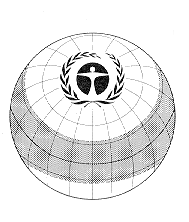
Volume III: Compendium of environmental standards
Documentation on monitoring and evaluating environmental impacts

German Federal Ministry for Economic Cooperation and Development Bundesministerium für wirtschaftliche Zusammenarbeit und Entwicklung (BMZ)
Wide-ranging and indepth specialized knowledge is needed in order to professionally evaluate the environmental relevance of a project or individual technical plans in the scope of cooperation activities, for example plans for locating industrial sites. The sixty environmental briefs in Volumes I and II provide an overview of potential environmental impacts and known environmental protection measures, they are a working aid when preparing and reviewing a project's environmental aspects and can be used during the planning phase, and also for the final evaluation. The areas covered : cross-sectoral planning, infrastructure, agriculture, mining and energy, trade and industry, are pertinent to all cooperation activities and planning work. Volume III gives an overview of the many environmental parameters and standards applicable in different countries, and facilitates the evaluation of individual environmental impacts. The handbook has been compiled in close cooperation with the Deutsche Gesellschaft für Technische Zusammenarbeit (GTZ) and the Kreditanstalt für Wiederaufbau (KfW).
All rights reserved
Ó Deutsche Gesellschaft für Technische Zusammenarbeit (GTZ) GmbH
Publication support and distribution:
Translation: GTZ Language Services
Typesetting: Text & Grafik
Printing and binding:
This book is printed on acid and chlorine-free paper
Printed in Germany
1.1 Objectives and terms of reference
1.2 Environmental standards
1.3 Structure of the compendium of environmental standards (CES)
3. Standards for influences on the environment
3.2 Waste heat
3.3 Emission of gases and dusts3.4 Solid wastes
3.5 Chemical aids
3.6 Changes in land-use3.7 Removal of soil
3.8 Action influencing the water balance
3.9 Action influencing the surface configuration
3.10 Noise emission
4. Standards for environmental quality
4.1 Air quality
4.2 Climatic situation
4.3 Noise situation4.6 Soil quality
4.7 Agricultural and forestry land
4.8 Biotope conditions (special biotope functions)
4.9 Food quality
5. Chemical substances and groups of substances/register of substances
5.1 General
5.2 Explanatory notes on content of "register of substances"
5.3 Selection of substances
5.4 Register of substances5.4.2 Index to register of substances with most important common names and synonyms
5.4.3 Explanatory notes (description of content of information sheets)
Acrolein
Aldrin
Antimony
Arsenic
Asbestos
Atrazine
Barium
Benzene
Beryllium
Bromine
Cadmium
Carbaryl
Carbon monoxide
Chlordane
Chlorinated naphthalenes
Chlorine
Chloroform
Chlorophenols
Chromium
Cobalt
Copper
Cresols
DDT
2,4-Dichlorophenoxy acetic acid
Dichlorvos
Dieldrin
Dinitro-o-cresol
Dioxins
Endosulfan
Endrin
Epichlorohydrin
Formaldehyde
Hexachlorobenzene
Hydrogen fluoride
Hydrogen sulphide
Lead and its inorganic compounds
Lead and its organic compounds
Lindane
Malathion
Mercury
Methyl bromide
Naphthalene
Nickel
Nitrate
Nitrogen oxides
Ozone
Paraquat
Parathion
Phenol
Polychlorinated biphenyls
Polycyclic aromatic hydrocarbons
Pyridine
Sulphur dioxide
Tetrachloroethene
Thallium
Toluene
1,1,1-trichloroethane
Trichloroethene
2,4,5-trichlorophenoxy acetic acid
Vanadium
Vinyl chloride
Zinc
6. International environment legislation
6.1 General
6.2 Assessment
6.3 Register of environment treaties
6.4 International, multilateral environment treaties6.4.1 Table: List of international multilateral environment treaties (since 1971) and overview of EIA relevance
6.4.2 Information sheets concerning selected, international, multilateral environment treaties (in chronological order)6.5 EC environment legislation
6.5.1 Register of information sheets for EC environment legislation
6.5.2 Information sheets on EC environment legislation
7.1 WHO recommended classification of selected pesticides according to hazards (1994)
7.2 FAO/UNEP Joint programme on prior informed consent (PIC) import decisions from participating countries as of 31 december 1994